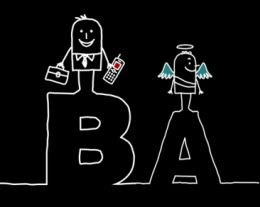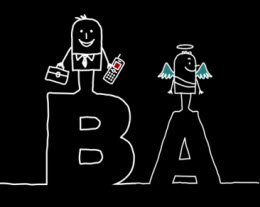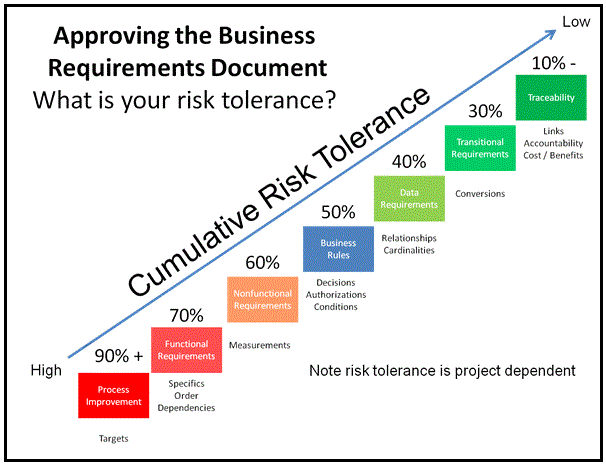Innovation and Business Analysis
How can I use the concepts of ‘innovation’ and ‘business analysis’ in the same phrase?
While, to some, this might sound oxymoronic (like the term ‘deafening silence’), or at least moronic (and those who know me would expect nothing less); I would argue that innovation contributes to business analysis, and business analysis contributes to innovation.
What does this mean and how do we make it happen?
We don’t need to be innovative, though, do we?
Business analysis practitioners can provide an excellent service as we work through the project process, asking questions, applying techniques, creating documents and presentations, and clarifying how to implement the approved solution. Like any discipline involved in business change, done well, business analysis can make the difference between a successful and a struggling project.
Where we can add real value, is in providing creative analysis – enabling stakeholders to think outside the box, encouraging them to behave like their project was their own business so that they care about the outcomes, and providing thought leadership from the project space to the organisation.
How innovation contributes to effective business analysis
An essential purpose of business analysis is to “recommend solutions that enable the organisation to achieve its goals” (p3, BABOK v2, 2009). Sometimes this will involve helping organisations to ‘invent’ something new, although more often it will be to ‘innovate’ – to improve something already in use.
However, with business analysis typically practiced within the confines of a project, under the direction of a project manager, we risk adopting convergent thinking approaches. By following the ‘correct’ process to document requirements for sign-off, we can be seen to add little value in the process – that is, we become a requirements clerk gathering requirements.
Of course, we are more effective where we plan and manage our own business analysis activities, identifying the stakeholders and negotiating the scope, so that we can elicit, analyse, document, and communicate what is needed.
We add even more value where we apply divergent thinking too; this is where innovation is key to business analysis.
What does this mean? We need to push our stakeholders outside their comfort zones, to think laterally, to challenge them beyond an assumed solution and find out why they want something – so that we can be clear about what they really need and guide them to selecting the optimum solution, not just the one they first thought of; that is, let’s not make a bad process faster, let’s design the right process and work out how that needs to be supported.
How do we do this? At its simplest, this requires two things: to develop our underlying competencies (in areas like creative thinking, problem solving, and facilitation), and to have the courage to push back (suggesting that there could be alternative solutions, challenging to ensure that the underlying causes or needs are identified).
How business analysis contributes to effective innovation
Business analysis also has much to offer to how an organisation approaches its innovation processes, that is, well before there is a project.
Innovation in the pre-project stage
Most organisations will go through some form of scoping and business case stage before a project is initiated. While this is often undertaken by a project manager; mature organisations and PMOs recognise that it is a better fit for the BA to build the case for a project, or at least support the business owner in doing that. (Indeed, some would argue that you cannot assign a project manager until you have a project to manage, however there is always business to analyse).
Now, you might contend that building a business case is not showing innovation, it is simply taking the information that is available then researching and analysing it enough to understand the likely costs, revenue, duration, return on investment, risks, etc.
However, to develop a strong business case, we are required to explore alternatives, and can often uncover unexpected options or combinations that were not in the mind of the customer or requestor. More examples of divergent thinking.
How do we do this? If BAs in your organisation do not currently work at this level, find a small project that cannot yet proceed because it needs a business case, then volunteer to ‘have a go’. Even if it still doesn’t get the go ahead, you can learn from the experience and interact with stakeholders in a slightly different role.
Innovation in ideation
Further upstream (in the new product development process), before an idea has even been approved to be scoped and have a business case developed, business owners are busy working with sales performance data, customer satisfaction feedback, market research, and blue-sky thinking – divining answers that will result in a new or improved product, give a jolt to sales, or eventually withdraw a product from the market.
Equipped with our divergent, lateral-thinking, and facilitation skills, we can really enable an organisation to make the most of smaller investments to determine if an idea makes sense, before anyone even thinks of writing a business case. Working at this fuzzy front-end is also very rewarding; as well as being very focused on good business outcomes, you definitely get a sense of play, and interact with senior management.
How do we do this? Opportunities for these sorts of roles are rare, and are often promoted internally rather than advertised. The best way to attract these is to be seen to perform well in the pre-project space, and if there are ever any moves to revise the solution delivery lifecycle, governance, and/or new product development process, volunteer to be involved – from there you can agitate for a role like this and position yourself as the ideal candidate.
Conclusion
I’ve shown that irrespective of where we work in an organisation, and the development process stage, business analysis has much to offer in terms of helping foster innovation in our organisations. Do you agree?
I’ve said it’s rare for us to work outside the project space. Is this your experience?
What steps can we take to convince our organisations to allow us to play in this more creative space?
Don’t forget to leave your comments below.

 (Thanks to Paula Tarvin and James P Bell and, of course, Ambrose Bierce):
(Thanks to Paula Tarvin and James P Bell and, of course, Ambrose Bierce):